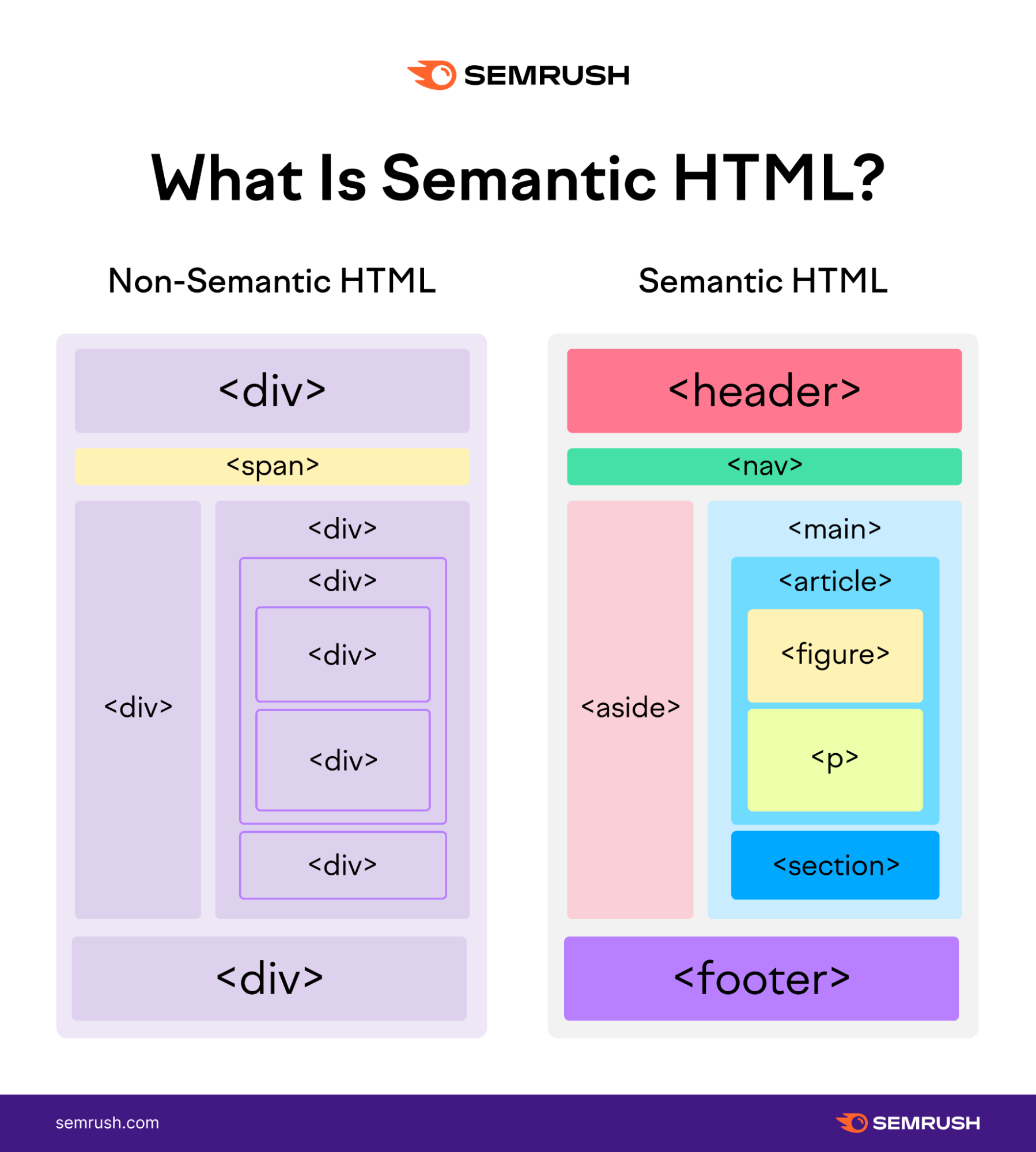HTML - Semantics
Semantic HTML

Benefits of Semantic HTML
- Accessibility
- Proper use of HTML semantic tags will allow screen readers to understand content better
- SEO
- Pages with correctly implemented semantic HTML have an advantage in SEO over those that don’t.
Semantic Structure
<header>- Defines content that should be considered the introductory information of a page or section
<nav>- Used for navigation links
- Can be nested within
<header>tag - Or secondary
<nav>tags are also used elsewhere on the page
<main>- Contains the main content (also called the body) of a page
- There should be only one tag per page.
<article>- Defines content that could stand independently of the page or site it’s on
- It does not necessarily mean a “blog post” Think of it more as “an article of clothing”—a self-contained item that can be used in various contexts.
<section>- Using
<section>is a way of grouping nearby content of a similar theme - Differs from an article tag in that it isn’t necessarily self-contained, but it forms part of something else
- Using
<aside>- Defines content that’s less important
- Often used for sidebars—areas that add complementary but nonessential information
<footer>- Used at bottom of a page
- Usually includes contact, copyright, and some site navigation
Semantic Text
The semantic HTML tags for text are HTML tags that—besides the formatting—also convey the semantic function of the text they contain.
<h1>(heading)- Top level heading
- Usually only one H1 per page
<h2>to<h6>(subheadings)- Subheadings of various levels of importance
- There can be multiple headings of the same level on a single page
<p>(paragraph)- A standalone paragraph of text
<a>(anchor)- Used to mark up a hyperlink from one page to another
<ol>(ordered list)- A list of items that are displayed in a particular order, starting with ordinal numbers
- One
<li>(list item) tag contains a single item in the list
<ul>(unordered list)- A list of items that do not need to be displayed in a particular order, starting with bullet points
- One
<li>(list item) tag contains a single item of the list
<q>/<blockquote>- A quotation of the text
- Use
<blockquote>for long, multi-line quotations - Use
<q>for shorter, inline quotations
<em>(emphasis)- Used for text that should be emphasized
<strong>(strong emphasis)- Used for text that should be strongly emphasized
<code>- A block of computer code
And many others... <summary>, <time>, <address>, <video>, etc. Check out full list
Don't Use Semantic HTML Tags for Styling, only use them if the content fits the tags purpose.